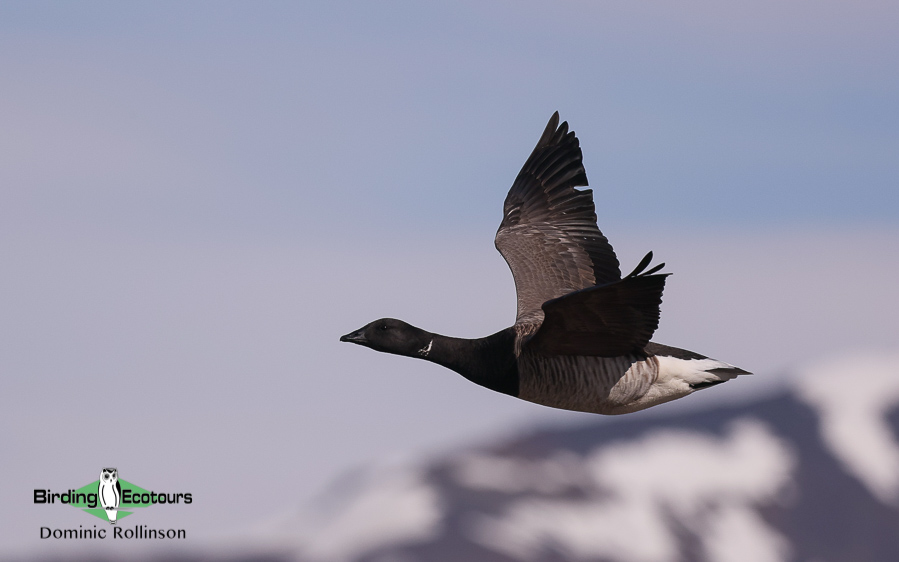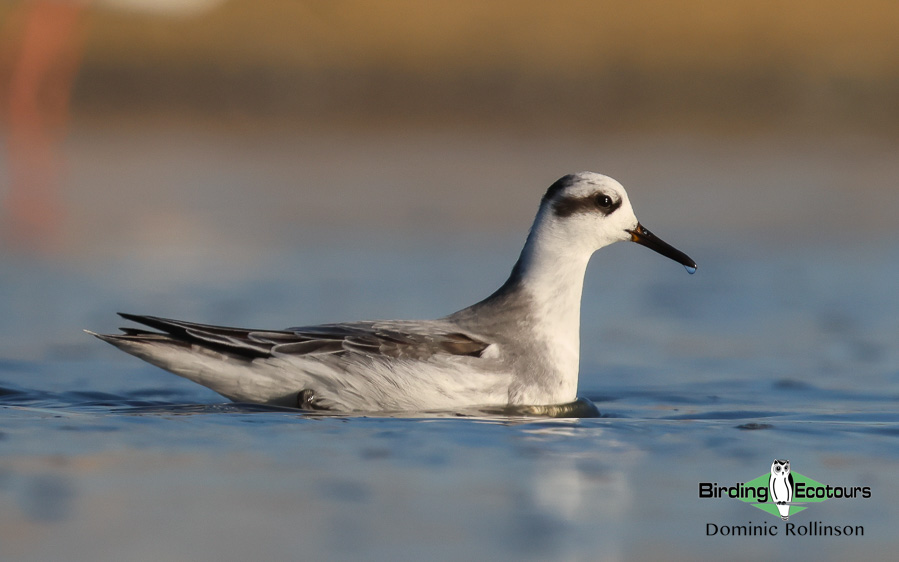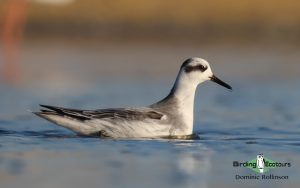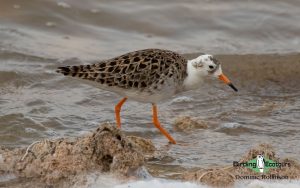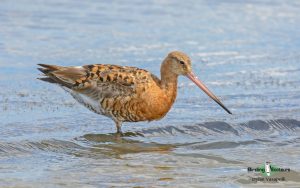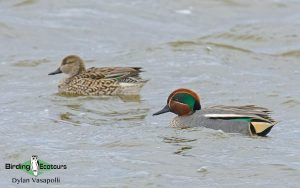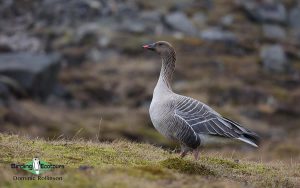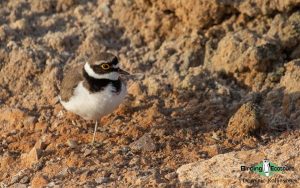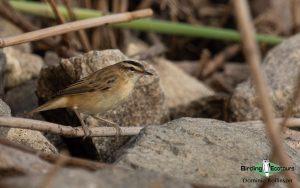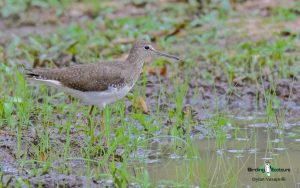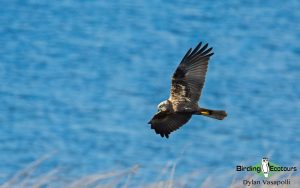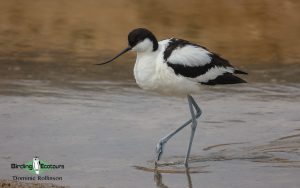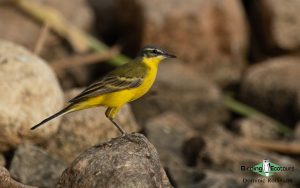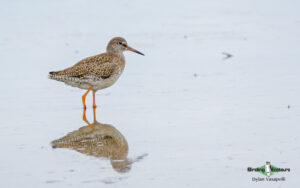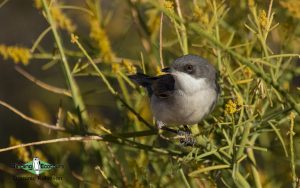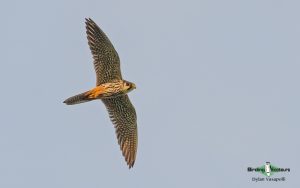1-day Norfolk Autumn Birding Tour - Birding the North Norfolk Coast
Go to: UK Day Tours | Full length UK birding tours | Birding Tours in Europe | All our birding tours
1-day Norfolk Autumn Birding Tour – Birding the North Norfolk Coast
This 1-day autumn birdwatching tour will see us visit some of Norfolk’s premier migration hotspots. Join us in searching for migrant shorebirds (waders) and passerines which move through Norfolk during the exciting months of August to November. We have several sites that we can visit on this day trip and we will keep the itinerary flexible based on how the weather and potential “falls” of migrant species are looking on the actual day. Some of the key locations we will visit are likely to include Warham Freshmarsh, Norfolk Wildlife Trust (NWT) Cley and Salthouse Marshes nature reserve, and Kelling Water Meadows. This North Norfolk Coast autumn birding tour will begin at 8am and finish around 4pm. This tour complements our spring, summer, and winter day tours, to provide excellent guided birdwatching trips across all seasons of the year.
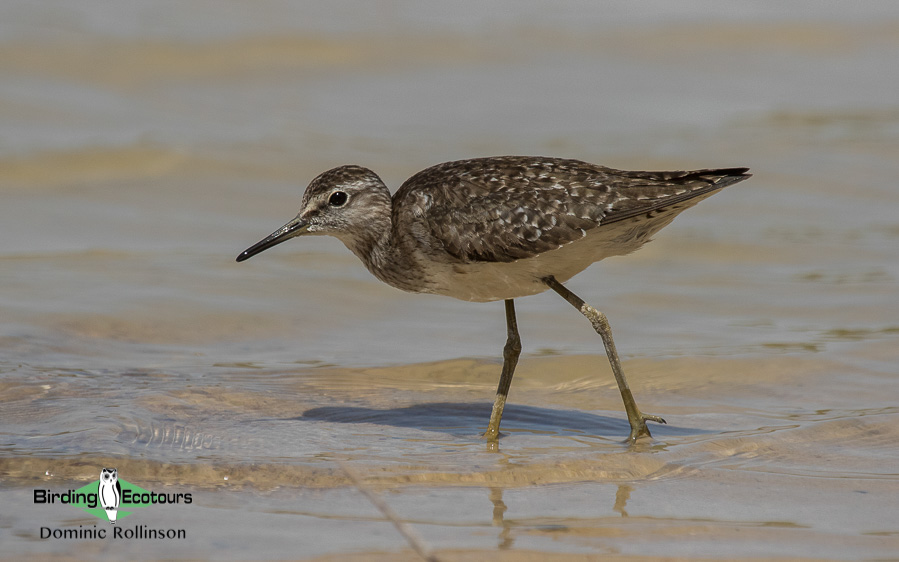
Because this tour is flexible, we will run through the potential highlights of each site below, but whether we visit each site will depend on how the migration and birding is progressing in the given period and actual day, and we may visit more or less sites depending on the actual bird activity. We will hope to find lots of interesting rare, scarce, and local birds on these day tours and invariably some common birds too. We have prepared some helpful and interesting blog posts on the UK’s common garden birds, farmland and woodland birds, and wetland and coastal birds.
As autumn progresses, the North Norfolk coast sees the arrival of large flocks of Brant Geese. A fantastic sight and atmospheric sound awaits us on our day tours.
Our first site is Warham Freshmarsh. This site was established relatively recently and has proven to be a huge hit with birds and birders alike. The pools adjacent to the main footpath are a fantastic birding location in autumn, with shorebird (wader) species including Northern Lapwing, Common Greenshank, Pied Avocet, Eurasian Oystercatcher, Common Ringed Plover, Little Ringed Plover, Eurasian Curlew, Black-tailed Godwit, Ruff, Dunlin, Common Snipe, Common Sandpiper, Green Sandpiper, Wood Sandpiper, Common Redshank, Grey Plover, European Golden Plover, Eurasian Whimbrel, Little Stint, Bar-tailed Godwit, Spotted Redshank, and Curlew Sandpiper all being regularly recorded, mostly during August and September.
Other species of interest here may include Eurasian Spoonbill, Pink-footed Goose, Northern Pintail, Garganey, Mediterranean Gull, Western Marsh Harrier, Red Kite, Hen Harrier, Common Whitethroat, Lesser Whitethroat, Northern Wheatear, Whinchat, Jack Snipe, Ring Ouzel. Scarcer species like Lapland Longspur (Bunting), Yellow-browed Warbler, and Barred Warbler can also be found here. As with the shorebirds, each of these species will be present at different points in the season, encouraging multiple visits to the site.
Our next site is the world-famous NWT Cley and Salthouse Marshes nature reserve. This is often regarded as the home of British birding and the reserve sports an incredible list of over 300 species! Many of the shorebirds (waders) found at Warham Freshmarsh will be present here but the numbers at each site will vary, which offers a good amount of variety throughout the day. Along with the more common species we will keep an eye out for the scarcer shorebirds, such as Red-necked Phalarope, Red (Grey) Phalarope, Curlew Sandpiper, Little Stint, and Jack Snipe.
The area is also an excellent place for exciting wildfowl and other waterbirds such as huge numbers of Pink-footed Geese and Brant (Dark-bellied Brent) Geese, plus smaller numbers of Common Pochard, Water Rail, Great Egret, Little Egret, Eurasian Spoonbill, and the reserves’ star species, Eurasian Bittern — an elusive and hard-to-spot species but one we have a chance of finding. Offshore, scanning of the sea should reveal good numbers of passing wildfowl, including Common Scoter, Eurasian Wigeon, Eurasian Teal, Greater Scaup, and perhaps scarcer species like Long-tailed Duck and Velvet Scoter.
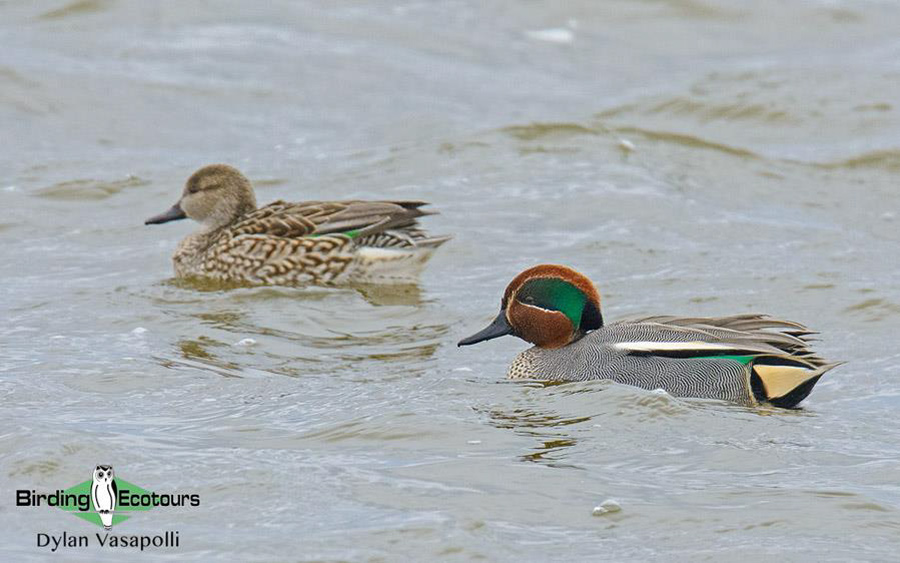
Gulls and terns are almost always present here too, with frequently recorded species including Black-headed Gull, Mediterranean Gull, Lesser Black-backed Gull, European Herring Gull, and Great Black-backed Gull being joined by migrant species like Sandwich Tern, Common Tern, Little Tern, and Little Gull. Possible scarcities might include Caspian Gull and Yellow-legged Gull. These tours will probably be too early for “white-winged gulls” like Iceland Gull and Glaucous Gull, with these species being more likely on our winter tours, but an early returning bird could be possible, if preceding weather conditions are favorable by late-October. Seabirds can also be found here, such as Northern Gannet, Razorbill, Common Murre (Common Guillemot), and Red-throated Loon (Diver), plus scarcer species like Black-throated Loon (Diver) and Common Loon (Great Northern Diver).
Here we also have a good chance of connecting with migrant birds of prey (raptors), with Eurasian Hobby, Merlin, and Hen Harrier all occurring fairly frequently, along with resident Common Buzzard, Common Kestrel, and Western Marsh Harrier. At this time of year, it is always worth looking overhead for southbound Western Ospreys and European Honey Buzzards as they filter along the coast.
The real draw of autumn birding here is the potential passerines to be found in the area. Typical species in autumn include the always popular Bearded Reedling (Tit), a stunning species and always a “most-wanted” bird, Eurasian Linnet, European Goldfinch, Western Yellow Wagtail, Common Reed Bunting, Eurasian Skylark, Eurasian Reed Warbler, Common Chiffchaff, Sedge Warbler, Whinchat, Common Redstart, Cetti’s Warbler, Redwing, Brambling, and Northern Wheatear are all possible too. The chance of finding a scarce or rare passerine here is high, with Snow Bunting, Yellow-browed Warbler, Pallas’s Leaf Warbler, Dusky Warbler, Radde’s Warbler, Horned (Shore) Lark, and Desert Wheatear all recorded nearly annually.
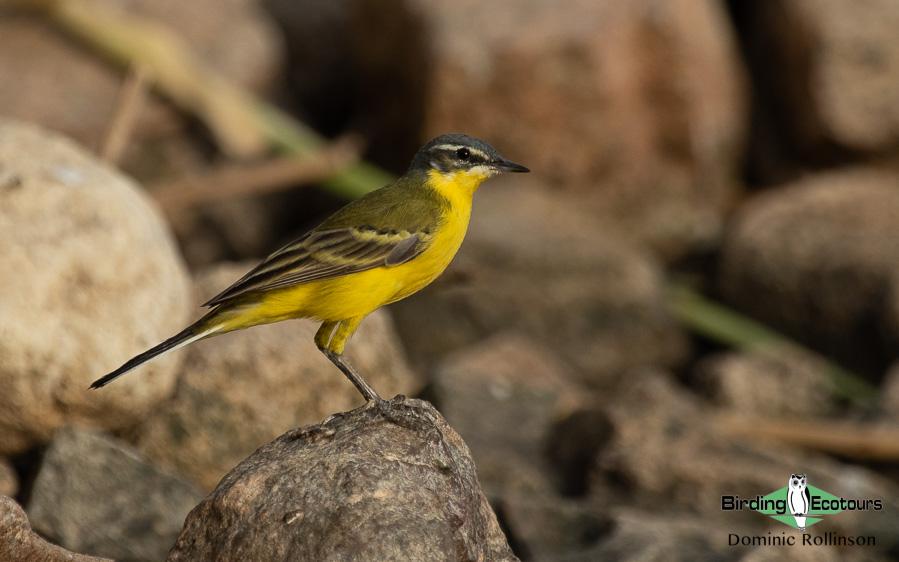
After a stop for a bathroom break at the visitor center, we will drive a short way to our next site of the day. Our third potential site for the day is the excellent Kelling Water Meadows. This is not only a fabulous birding site, but also a great place to explore. Approaching the site from Salthouse will see us walk along the edge of freshmarsh habitat and regular species here include Mute Swan, Greylag Goose, Mallard, Common Moorhen, Black-headed Gull, Rook, Barn Swallow, and many of the shorebirds (waders) mentioned earlier in the itinerary. The area is excellent for birds of prey with Hen Harrier, Peregrine Falcon, Merlin, Western Marsh Harrier, Common Buzzard, and Common Kestrel all found here. We may also get lucky in finding the two regular owl species occurring here, Short-eared Owl and Western Barn Owl – both stunning birds.
Closer to the water meadows, the scrubby habitat here should give us interesting passerines like Sedge Warbler, Eurasian Reed Warbler, European Stonechat, Yellowhammer, Common Whitethroat, Lesser Whitethroat, Common Reed Bunting, Northern Wheatear, Meadow Pipit, and European Goldfinch. An area of scrub close to the sea is a good place to find scarce and rare migrants like Eurasian Wryneck, Snow Bunting, Lapland Longspur (Bunting), Black Redstart, Barred Warbler, and Red-backed Shrike. The neighboring agricultural fields are an excellent spot to find both Grey Partridge and Red-legged Partridge, and the subtly beautiful Stock Dove can also be found here.
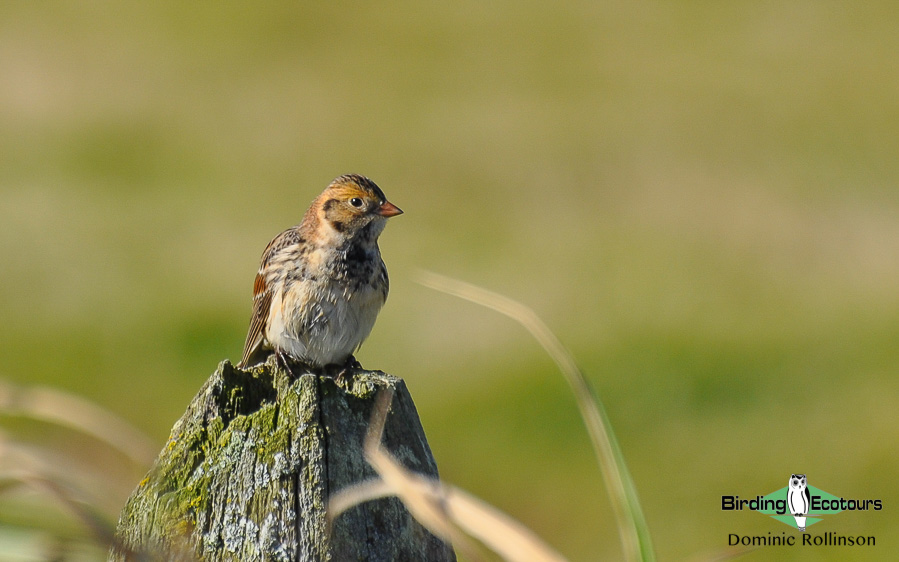
Reaching the water meadows itself, we find an area of open water with grassy fringes which frequently holds good numbers of shorebirds (waders). Little Ringed Plover, Common Redshank, Common Greenshank, Green Sandpiper, Wood Sandpiper, Common Sandpiper, Eurasian Oystercatcher, Pied Avocet, Common Snipe, Northern Lapwing, Eurasian Curlew, Eurasian Whimbrel, Black-tailed Godwit, Ruddy Turnstone, Red Knot, and Dunlin are the most regular species here, with scarcer and rarer species like Grey (Red) Phalarope, Red-necked Phalarope, Curlew Sandpiper, Spotted Redshank, Ruff, Little Stint, and Temminck’s Stint found here during autumn.
Wildfowl can also be present, with Greylag Goose, Pink-footed Goose, Gadwall, Mallard, Common Shelduck, Northern Shoveler, Egyptian Goose, Eurasian Wigeon, Eurasian Teal, and Tufted Duck all found here. Later in the season, scanning the sea from here can reveal Common Scoter, Greater Scaup, Great Crested Grebe, Red-throated Loon (Diver), and smaller numbers of Black-throated Loon (Diver), Velvet Scoter, Long-tailed Duck, and Common Eider.
One final area to explore is the heavily vegetated track which runs from Kelling village. This is a real passerine trap and interesting species like European Pied Flycatcher, Garden Warbler, Red-breasted Flycatcher, Common Firecrest, Spotted Flycatcher, Yellow-browed Warbler, and Pallas’s Leaf Warbler are regularly found here in autumn, although all must be considered as a bonus species of any visit.
The dainty and cute Red (Grey) Phalarope is a regular autumn migrant and can sometimes be incredibly confiding.
More common species found in this corridor of vegetation include Eurasian Blackcap, Willow Warbler, Common Chiffchaff, European Robin, Eurasian Blackbird, Common Chaffinch, European Greenfinch, Coal Tit, Eurasian Bullfinch, Fieldfare, Brambling, Redwing, and Goldcrest.
After this final bit of birding, we will retrace our steps towards the village of Salthouse, birding as we go, and this is where our exciting autumn day tour of the North Norfolk Coast will end. If you would prefer to take this day tour as a private tour for yourself or with your partner or group of friends, we can focus on whatever you like. This could be accumulating a large day list of species, taking your time to study the birds, trying to find that mega rarity, looking for particular target species, or just enjoying a day out in the cooler autumn air! Just let us know what you have in mind when you book the tour.
Download Itinerary